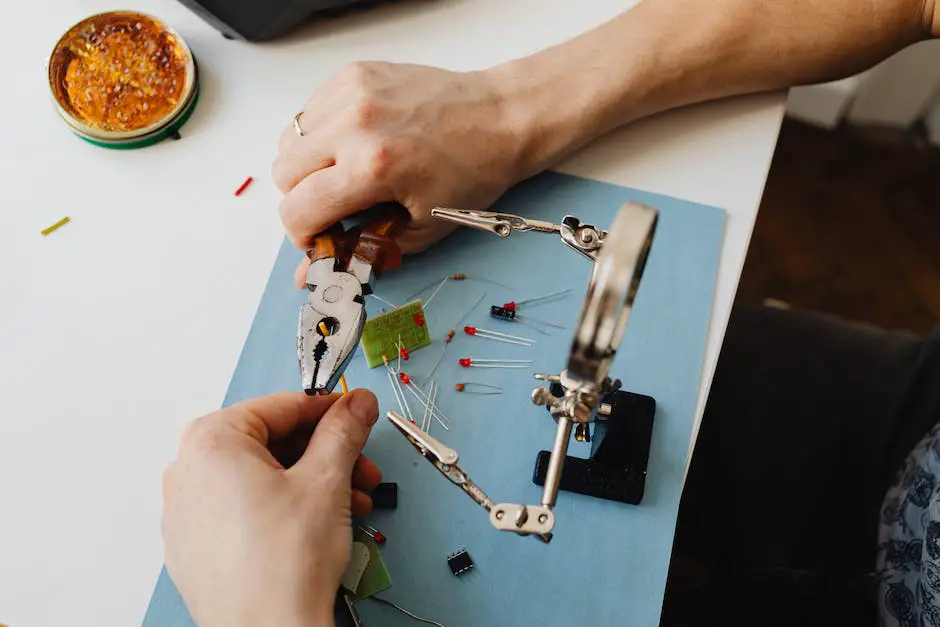In the fascinating world of autograph collecting, items of significant sentimental and monetary value accumulate over time. Just like any valuable asset, these collections need protection against the unforeseen circumstances that can result in damage or loss, such as theft, fires, or floods. Delving into the importance of autograph collection insurance, we reveal the rationale behind safeguarding your collection, the importance of understanding its value, the various insurance options available, tips for choosing an ideal insurance provider, and the integral protocols involved in filing an insurance claim. This comprehensive guide serves as a road map for collectors as they navigate their journey in this exciting hobby, assisting in making informed decisions and cultivating confidence in the protection of their prized possessions.
The Importance of Autograph Collection Insurance
Understanding the Value of Autograph Collection Insurance
Insurance for autograph collections functions like any other type of insurance coverage. It safeguards your assets and provides reimbursement should any loss occurs. Autographs can be incredibly valuable, especially if they are rare or attached to historical figures. For these reasons, it is highly advisable for serious collectors to invest in specific insurance for their collections.
The Risks Faced by Autograph Collectors
Autograph collectors face many risks. Collections can be lost or severely damaged due to theft, fire, or natural disasters such as floods. These events could cause significant monetary losses, particularly if the autographs are rare or linked to significant historical events or figures. Other risks include accidental damage, water damage, or even loss during transit or at shows and exhibitions. Autograph collection insurance can provide coverage in these situations.
How Does Autograph Collection Insurance Work?
Autograph collection insurance operates much like other forms of property insurance. If a covered loss happens, the insurer will compensate the insured based on the policy’s terms. Some insurance policies offer “all risk” coverage, covering all forms of loss unless specifically excluded. Others may provide a “named perils” cover, insuring only against the dangers explicitly listed in the contract. Loss valuation is also an important aspect to consider – some policies offer agreed value coverage, where the value of each autograph is pre-determined at the time the policy is issued.
Special Conditions for Autograph Collection Insurance
Many insurers require collectors to properly secure and store their collections to minimize risk. This can include measures such as keeping autographs in locked, fireproof safes or displaying them in protective cases in temperature and moisture-controlled environments. Additional security measures like alarms and surveillance systems may also be encouraged or required.
How to Choose Autograph Collection Insurance
Choosing the right insurance for your autograph collection requires careful consideration. Firstly, you must accurately determine the value of your collection. This could require professional appraisal, and in many cases, insurers will require a detailed inventory listing each item and its appraised value. Insurers will also consider factors such as how and where the collection is stored, and whether you loan pieces for exhibitions or take them to shows. Research multiple insurance providers, check policy offerings, and look for insurers who specialize in autograph or collectibles insurance for the best understanding and coverage of your collection.
Summary: The Significance of Insurance for Autograph Collections
Collecting autographs can be a significant financial investment, not to mention the emotional value attached to it. Unpredicted incidents such as theft, fire, flood, or accidental damage can cause immense distress. However, an insurance policy can serve as a crucial safety net under these circumstances. It safeguards you against monetary losses, helps in replacing or restoring the treasured collection and grants you the freedom to indulge in your passion without a constant dread of unforeseen risks.

Understanding the Value of Your Autograph Collection
Determining the Monetary Value of Your Autograph Collection
Assessing the value of an autograph collection is a key step, similar to other investment assets. The valuation primarily depends on characteristics like the rarity, condition, and authentication of the autographs. Each of these factors can significantly influence the insurance coverage for your collection.
Rarity
The rarity of an autograph largely determines its value. The rarity of an autograph is influenced by several factors. Autographs of personalities who typically shy away from signing, or those who have lived many years ago, are considered rare. Rarity can also be based on the quantity of authentic autographs of a particular personality available in the market. The harder it is to find an autograph, the greater its perceived value thereby influencing the insurance value.
Condition
The condition of an autograph is another key determinant of its value. Autographs which are clean, clear, and free from tears, creases or other forms of damage are valued higher than those in poor condition. The condition affects the autograph’s visual appeal and its desirability among collectors. Autographs stored in optimal conditions – away from direct light and extreme temperatures – tend to last longer and retain their value. Given the impact of condition on worth, insuring your collection helps protect its value against potential damage.
Authentication
An autograph’s value is also dependent on its authentication. An autographed item that comes with a certificate of authenticity (COA) or has been authenticated by a reputable third party tends to command a higher value. Authentication is a way to ensure the autograph was genuinely signed by the stated personality and not a forgery. The process of verifying autographs usually involves experienced professionals who are well-versed with the signing habits and styles of different personalities. Therefore, when insuring, the authenticated pieces of your collection may bear a higher rate due to their verified value.
Importance of Regular Appraisals
Regular appraisals are essential in maintaining accurate insurance values for autograph collections. As market trends can fluctuate, an autograph’s value today might not be the same in a few years. Regularly updating the appraisal of your collection ensures that the insurance coverage matches the current market value. Additionally, appraisals can offer official documentation of your collection’s value which can be important when addressing claims.
Being aware of your autograph collection’s value is important for its protection and this can be accurately determined through consultation with reliable autograph experts or appraisers. They can guide you with an accurate value assessment based on several factors such as rarity, condition, and personality of the signer thus ensuring that you can aim for a suitable insurance cover. Their expert opinion ensures that your collection is thoroughly accounted for, providing you with a safety net in the event of any damage, theft, or loss, where adequate compensation will be required.
It is essential to be mindful and understand the factors influencing the value of an autograph collection as it plays a significant role in selecting the apt insurance coverage. Regular appraisals help in maintaining an updated value of your collection. Safeguard your autograph collection for which you have invested time, effort and passion by assuring adequate insurance coverage.

Options for Autograph Collection Insurance
Standard Homeowners Insurance and Autograph Collections
The foremost type of insurance many consider to safeguard their autograph collection is homeowners insurance. This traditional insurance policy typically covers a designated amount of personal property, which can include your autograph collection. However, such policies often come with certain restrictions and exclusions. They may only cover losses against specifically mentioned situations, such as theft or fire, and might not consider all possibilities including damage due to an accident or misplaced items.
Bear in mind, the coverage amount for personal property is often a fraction of the total insurance limit for the primary dwelling. If the value of your autograph collection surpasses the coverage value, it becomes necessary to purchase additional personal property coverage.
Also, a standard homeowners insurance policy usually works on an actual cash value or replacement cost basis. This means the policy may either pay the depreciated value of your collection (actual cash value) or the cost to replace the item (replacement cost). Unfortunately, neither of these might match the potential appreciated value of your growing autograph collection over time.
Specialized Collection Insurance for Autograph Collections
Unlike general homeowners insurance, investing in specialized collection insurance provides broader, more comprehensive coverage for your autograph collection. This type of insurance is designed specifically for valuable and rare items such as autographs, and it can protect against a greater number of perils.
Another advantage of specialized collection insurance is that it offers agreed value coverage, meaning the insurer and the policyholder agree on the value of the insured items when the policy is written. So, if a loss occurs, you would receive the full agreed-upon amount.
One of the key benefits of this type of insurance is that it provides worldwide coverage. This is particularly useful if you frequently travel with items in your collection or if your autographs are stored or displayed outside of your residence.
However, be aware that this type of policy generally has higher premiums than a standard homeowners insurance policy. It’s also worth noting that insurers often require appraisals or proof of purchase to establish the value of the items insured under a specialized collection insurance policy.
Selecting The Best Option: Homeowners Insurance versus Collector’s Insurance
Choosing the right insurance for your autograph collection comes down to two main options: homeowners insurance and specialized collection insurance. The best choice depends on the specific characteristics and value of your autograph collection.
A specialized collection insurance might be the right choice if your autograph collection holds significant worth or houses numerous uncommon or unique items. However, if your collection holds a more modest value and primarily resides within your home, your homeowners insurance may provide enough coverage.
In making this decision, it is fundamental to accurately evaluate the needs of your collection and seek advice from insurance professionals. Furthermore, professional autograph appraisers or experienced collectors can provide valuable insights to help you make an informed choice about insurance.

How to Choose an Insurance Company
Understanding Insurance For Autograph Collections
Insurance specifically tailored for signed memorabilia or autograph collections is a unique coverage type designed to protect the value of these collectibles. Given that the financial worth of these collections can widely range, it’s critical your insurance policy mirrors your collection’s true worth. This guarantees that in case of any loss, theft, or damage, you have the means to recoup the value of your priceless collection.
Analysing the Reputation of the Insurance Company
It’s crucial to select an insurance company with a solid reputation. You can determine the reputation of the company by researching online reviews and testimonials or consulting with other collectors. Companies with a record of promptly settling claims, and offering good customer service should be given preference. The company should also have a good standing with regulators, such as the state insurance department.
Company’s Experience in Handling Autograph Collection Insurance
Insurance companies that specialize in, or have experience with, insuring autograph collections are generally better equipped to understand the unique needs and potential challenges of insuring these collections. They’re likely to provide more accurate appraisals and policy terms that better meet the requirements of autograph collectors. You should feel comfortable discussing your collection and its value with the insurer.
Autograph Collection Insurance Policy Costs
Comparing policy costs across different insurance providers is helpful. Policy costs typically depend on the value of the collection, where it’s stored, and if any security measures are in place. Some insurance providers may also consider the rarity and condition of the autographs when determining policy costs. Lower premiums might not always offer the coverage you need, so ensure the coverage matches the value of your collection.
Understanding Policy Conditions and Exclusions
Insurance policies typically include certain conditions and exclusions, which are circumstances under which the insurer won’t provide coverage. For example, some policies might not cover damage caused by natural disasters like floods or earthquakes, unless additional coverage is purchased. Others might not cover theft if appropriate security measures aren’t in place. Understanding these conditions and exclusions can help avoid unpleasant surprises when you need to make a claim.
Efficiency of the Claim Process
An efficient claim process ensures you receive your insurance payout quickly and with minimal hassle. You should look for insurance companies that have clear guidelines on how to file a claim, what evidence is required, and the timeline for processing and payment. A good insurance company will offer support throughout the claim process, guiding you on the steps to follow, and making sure the process is as smooth as possible.
Final Thoughts
Selecting the ideal insurance company to protect your autograph collection requires thoughtful examination. The above-mentioned advice can guide you towards a sound decision, ensuring the protection of your collection, which likely holds substantial monetary and sentimental worth.

The Process of Filing an Insurance Claim
The Procedure to File an Insurance Claim for Autograph Collections
The task of submitting an insurance claim for a lost, stolen, or damaged autograph may initially appear intimidating. However, by adhering to a structured method, this process becomes easier. First and foremost, if theft is involved, report it to the police. While the probability of retrieving the item might be low, it produces necessary legal evidence and is often a prerequisite for the claim process.
Contact Your Insurance Company
Immediately after the loss or damage, reach out to your insurance company. Explain the situation and ask for guidance on the next steps. Every insurance company has its unique process of filing a claim, yet all will require some basic information, such as the details of the item insured, circumstances surrounding the loss or damage, and the estimated value of the lost item.
Provide Necessary Documentation
To support your claim, your insurance provider will ask for proof of ownership and value. This can include sales receipts, appraisal reports, photos, or other proof of the item’s worth. Also crucial is the documentation of the loss or damage—photos or video evidence can be notably useful if the item was damaged. A police report, if applicable, is also typically required.
Professional Appraisals
Most insurance companies would recommend having your valuable autograph collections professionally appraised. Certified appraisers follow a methodical process in determining an item’s worth. They evaluate the signature’s authenticity, the condition of the item, the rarity of the signature, and other notable characteristics. This appraisal evidence should be presented to your insurance company if you haven’t done so already during the initial insurance coverage process.
Communicate Effectively With Adjusters
Once the claim is submitted, you might be assigned an insurance adjuster to handle your case. Their role is to investigate the claim and negotiate the settlement. You must maintain open and cooperative communication with the adjuster. It helps them understand the value associated with the lost or damaged autograph. Do not hesitate to clarify any queries, ask for updates about your case, and ensure your claim is being handled promptly and accurately.
Insurance Settlement
The settlement phase determines the amount you get reimbursed based on your policy’s terms. This could mean a full reimbursement, partial payment, or even denial in some cases. It is essential to review your policy and understand its inclusions and exclusions, defined deductibles, and settlement specifications.
Remember, it’s better to prevent losses or damage by taking proactive steps. Install security measures, handle and store your autographs carefully, and regularly reassess the value of your collection, ensuring its insurance coverage is up-to-date. These preventive steps immensely help in managing the autograph insurance claim process.

Protecting your autograph collection is not only a wise financial decision but also a means of preserving cherished elements of history and culture. Throughout this guide, we have explored the key aspects of autograph collection insurance, detailing how to evaluate the worth of your collection, the dynamics of different insurance options, the factors to consider when selecting an insurance company, and the crucial steps to take when filing an insurance claim. Armed with this knowledge, you can approach your collection with a greater sense of security. Indeed, with the right protection in place, you can continue to grow your collection, celebrating the joy of each new acquisition, secure in the knowledge that your assets are well-protected.

